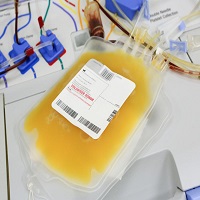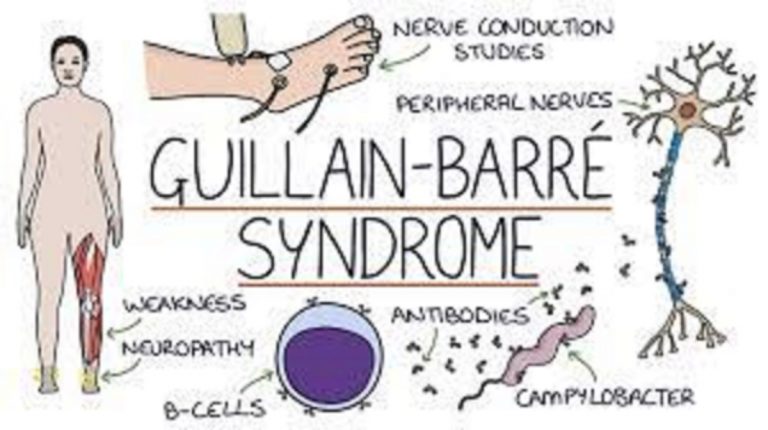
A new report raises hope that the blood of recovered patients can help treat severe coronavirus cases.
Five critically ill patients were hospitalized in Shenzhen, China, with serious cases of COVID-19. They received an experimental plasma transfusion and have since recovered to varying degrees, according to new research published 27 March 2020 in the Journal of the American Medical Association.
Doctors conducted the study at a Shenzhen hospital from January 20 to March 25. The five patients, ranging in age from 36 to 73, received plasma between 10 and 22 days after being admitted to the hospital.
Within three days of the transfusion, four of the five had their body temperature normalize. Four of the five also saw their cases of acute respiratory distress resolve within 12 days.
All told, by the time the results were published Friday, three of the patients had been discharged from the hospital. The other two were both in stable condition, but still needed to be on ventilators in a hospital setting.
Treatment of 5 Critically Ill Patients With COVID-19 With Convalescent Plasma
Chenguang Shen, PhD1; Zhaoqin Wang, PhD1; Fang Zhao, PhD1; et alYang Yang, MD1; Jinxiu Li, MD1; Jing Yuan, MD1; Fuxiang Wang, MD1; Delin Li, PhD1,2; Minghui Yang, PhD1; Li Xing, MM1; Jinli Wei, MM1; Haixia Xiao, PhD1,2; Yan Yang, MM1; Jiuxin Qu, MD1; Ling Qing, MM1; Li Chen, MD1; Zhixiang Xu, MM1; Ling Peng, MM1; Yanjie Li, MM1; Haixia Zheng, MM1; Feng Chen, MM1; Kun Huang, MM1; Yujing Jiang, MM1; Dongjing Liu, MD1; Zheng Zhang, MD1; Yingxia Liu, MD1; Lei Liu, MD1
JAMA. Published online March 27, 2020. doi:10.1001/jama.2020.4783
Key Points
Question Could administration of convalescent plasma transfusion be beneficial in the treatment of critically ill patients with coronavirus disease 2019 (COVID-19)?
Findings In this uncontrolled case series of 5 critically ill patients with COVID-19 and acute respiratory distress syndrome (ARDS), administration of convalescent plasma containing neutralizing antibody was followed by an improvement in clinical status.
Meaning These preliminary findings raise the possibility that convalescent plasma transfusion may be helpful in the treatment of critically ill patients with COVID-19 and ARDS, but this approach requires evaluation in randomized clinical trials.Abstract
Importance Coronavirus disease 2019 (COVID-19) is a pandemic with no specific therapeutic agents and substantial mortality. It is critical to find new treatments.
Objective To determine whether convalescent plasma transfusion may be beneficial in the treatment of critically ill patients with severe acute respiratory syndrome coronavirus 2 (SARS-CoV-2) infection.
Design, Setting, and Participants Case series of 5 critically ill patients with laboratory-confirmed COVID-19 and acute respiratory distress syndrome (ARDS) who met the following criteria: severe pneumonia with rapid progression and continuously high viral load despite antiviral treatment; Pao2/Fio2 <300; and mechanical ventilation. All 5 were treated with convalescent plasma transfusion. The study was conducted at the infectious disease department, Shenzhen Third People’s Hospital in Shenzhen, China, from January 20, 2020, to March 25, 2020; final date of follow-up was March 25, 2020. Clinical outcomes were compared before and after convalescent plasma transfusion.
Exposures Patients received transfusion with convalescent plasma with a SARS-CoV-2–specific antibody (IgG) binding titer greater than 1:1000 (end point dilution titer, by enzyme-linked immunosorbent assay [ELISA]) and a neutralization titer greater than 40 (end point dilution titer) that had been obtained from 5 patients who recovered from COVID-19. Convalescent plasma was administered between 10 and 22 days after admission.
Main Outcomes and Measures Changes of body temperature, Sequential Organ Failure Assessment (SOFA) score (range 0-24, with higher scores indicating more severe illness), Pao2/Fio2, viral load, serum antibody titer, routine blood biochemical index, ARDS, and ventilatory and extracorporeal membrane oxygenation (ECMO) supports before and after convalescent plasma transfusion.
Results All 5 patients (age range, 36-65 years; 2 women) were receiving mechanical ventilation at the time of treatment and all had received antiviral agents and methylprednisolone. Following plasma transfusion, body temperature normalized within 3 days in 4 of 5 patients, the SOFA score decreased, and Pao2/Fio2 increased within 12 days (range, 172-276 before and 284-366 after). Viral loads also decreased and became negative within 12 days after the transfusion, and SARS-CoV-2–specific ELISA and neutralizing antibody titers increased following the transfusion (range, 40-60 before and 80-320 on day 7). ARDS resolved in 4 patients at 12 days after transfusion, and 3 patients were weaned from mechanical ventilation within 2 weeks of treatment. Of the 5 patients, 3 have been discharged from the hospital (length of stay: 53, 51, and 55 days), and 2 are in stable condition at 37 days after transfusion.
Conclusions and Relevance In this preliminary uncontrolled case series of 5 critically ill patients with COVID-19 and ARDS, administration of convalescent plasma containing neutralizing antibody was followed by improvement in their clinical status. The limited sample size and study design preclude a definitive statement about the potential effectiveness of this treatment, and these observations require evaluation in clinical trials.






